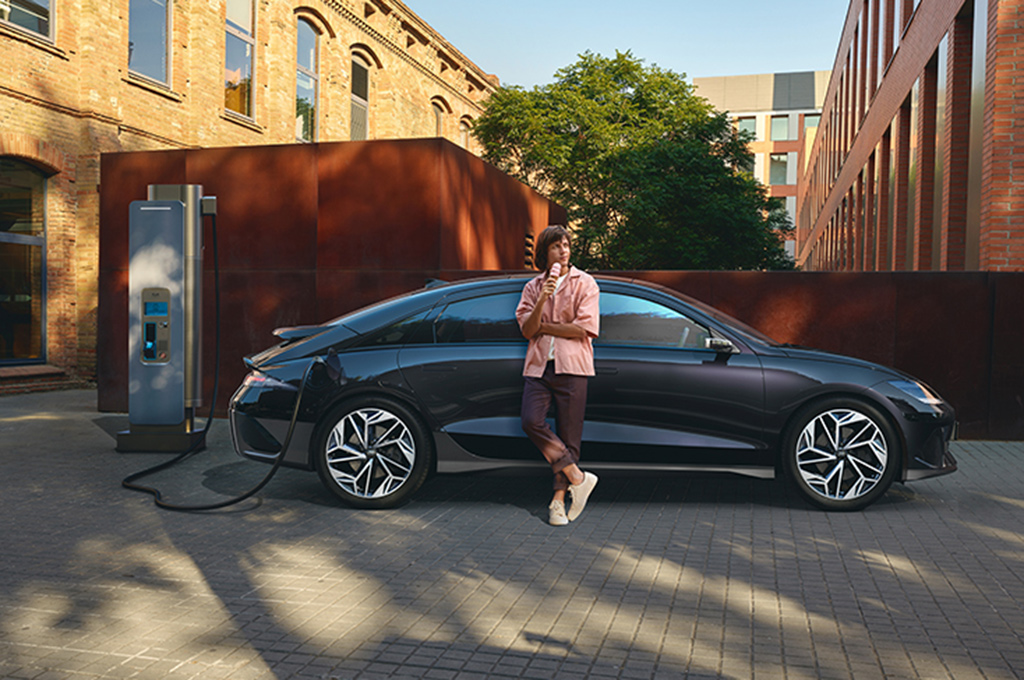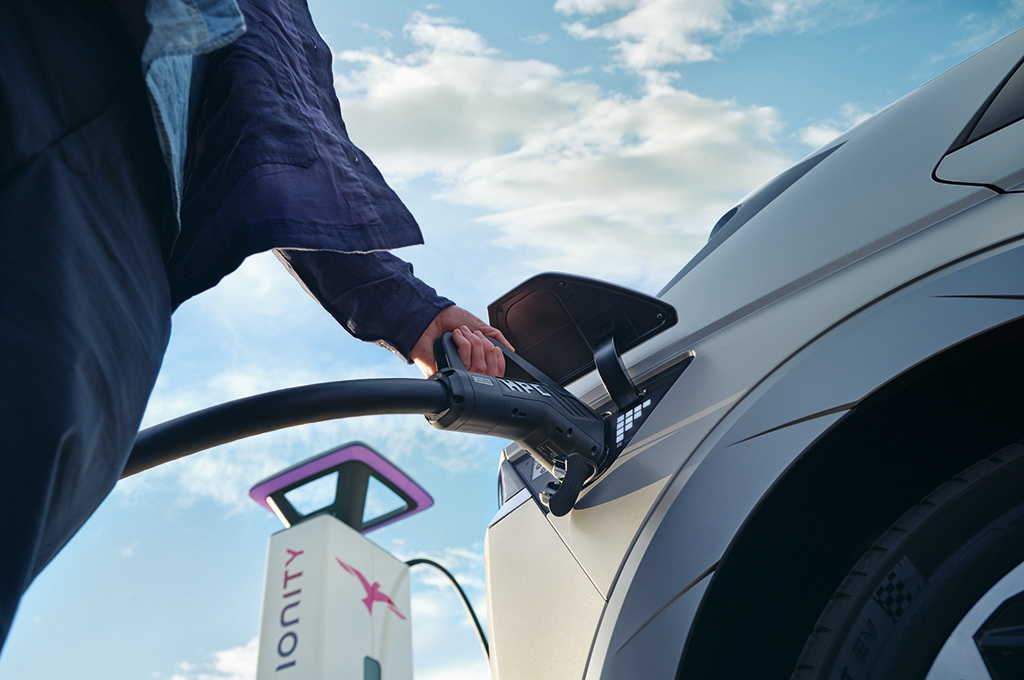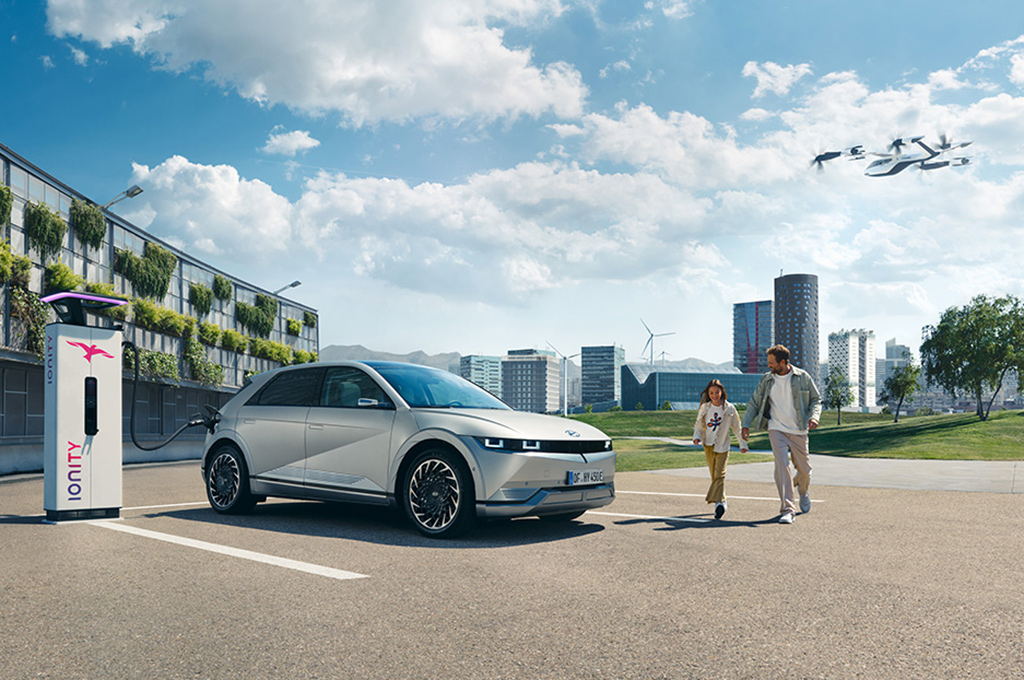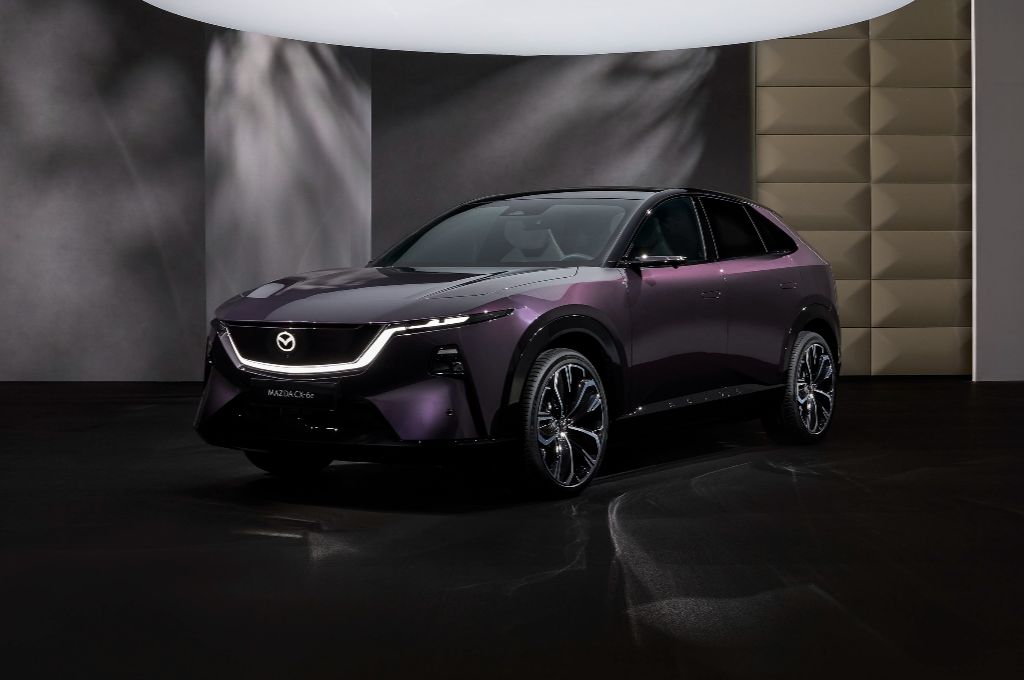Hyundai’s vision for the future of electric mobility is one of the most ambitious and exciting in the business. With years of experience in electrification already under its wheels, the brand’s innovations, sustainability projects, and award-winning cars mark it out as a genuine leader in the electric revolution.
Although almost every automotive brand has its own vision of the future, along with plans to be at the sharp end, very few, if any, can match Hyundai when it comes to bringing these plans to life. An early pioneer of electric cars, Hyundai can draw on more than a decade of experience and has one of the most ambitious and exciting product pipelines in the industry.
What’s more, Hyundai’s reach goes beyond the familiar. In addition to its award-winning cars, the brand is working with a variety of technology providers to introduce an innovative range of mobility solutions, from personal air vehicles to robotic dogs (yes, really!)

Innovation designed to deliver
Today, Hyundai boasts an extensive range of electrified vehicles on the market, from mild hybrid (MHEV) models, though hybrid (HEV), Plug-in Hybrid (PHEV) up to fully electric (BEV) cars. The brand is also continuing its development of hydrogen fuel cell technology in the form of the NEXO.
Among the many innovations introduced by Hyundai is its E-GMP platform – an advanced architecture that underpins both the IONIQ 5 and IONIQ 6 models, including the all-new IONIQ 5 N flagship. E-GMP has introduced a number of state-of-the-art features, including 800 volt fast-charging capabilities*, human-centred interior design and maximised space. Thanks to these and numerous other qualities, the IONIQ 5 and IONIQ 6 have won back-to-back World Car of the Year titles – a hugely impressive achievement.
Hyundai’s fully electric BEV range, which also includes the recently launched all-new KONA Electric, introduces number of key features designed to help support sustainable societies. These include everything from innovative cabin materials such as ECONYL, a hard-wearing textile made from recycled plastic fishing nets, to Hyundai’s V2L (Vehicle-to-Load) system. The latter allows owners to use their vehicles’ high voltage battery to power or charge electrical equipment on the move. V2L uses either an integrated socket below the rear seats or a special adaptor that slots into the charging point, and gives owners the freedom to power electric items while being ‘off-grid’.
In addition to V2L, Hyundai is also making significant advances in the field of Vehicle to Grid (V2G) technology. In 2022, the brand launched a new mobility project in the Dutch city of Utrecht, along with local mobility provider We Drive Solar.
The scheme, based in a new housing development in Cartesius, uses 25 IONIQ 5s, all of which are equipped with V2G technology and bi-directional charging capability. The vehicles are available for residents to use as part of a car-sharing service and charged using solar energy from 25 school roofs. When not being driven, the IONIQ 5s act as energy stores that can send power into the grid at peak times via the bi-directional charging system. The scheme will expand to 150 vehicles that will act as an even larger scale buffer for renewable energy on the grid.

Rolling labs: developing the future
Despite having two World Car of the Year winners in its line-up and a host of exciting projects on the go, Hyundai is relentlessly pushing boundaries in other areas. The brand’s N Brand rolling labs are fully functional prototypes used to develop ideas and technologies pioneered by Hyundai Motorsport. Innovations that deliver genuine benefits are perfected in these rolling labs before being introduced in series production models.
To develop the next generation of electric performance cars, Hyundai has built two rolling labs, the RN22e and N Vision 74. The former is based on the same E-GMP platform as the IONIQ 5 and IONIQ 6 and features a host of advanced technologies designed to translate Hyundai’s acclaimed N driving experience to the electric era. The first result of this project is the IONIQ 5 N, Hyundai’s first battery electric model to wear the coveted N badge. Watch our walkaround of the Hyundai IONIQ 5 N [HERE].
The N Vision 74 meanwhile showcases the N Brand’s mid- to long-term vision for high performance cars and embraces hydrogen fuel cell technology. Powered by a further evolution of the 500kW fuel cell powertrain first seen on the N 2025 Vision Grand Turismo concept, the Vision 74’s exterior and interior design pays homage to Hyundai’s 1974 Pony Coupe concept. With a long driving range and fast refuelling, the Vision 74 features a host of innovations, including individual cooling systems for each fuel cell stack and electronic torque vectoring (eTVTM) with 235kW motors on each wheel.
Powering worlds beyond the expected
Electrification, along with rapidly advancing autonomy technology, has the potential to make our lives safer and more convenient. Hyundai is, as you might expect, at the forefront of development and has partnered with some of the most exciting and advanced brands in the tech world to bring them to life faster.
One such example is the IONIQ 5 robotaxi. Created by Motional, a joint venture between Hyundai and Aptiv, the IONIQ 5 robotaxi is what’s known as an SAE Level 4 autonomous vehicle. In simple terms, that means a car that can operate without a driver.
IONIQ 5 robotaxis have been operational in pilot projects around the world and have covered huge distances in a variety of different driving environments. These include the world’s longest-standing public robotaxi fleet in Las Vegas which has delivered more than 100,000 public rides with overwhelming customer satisfaction.
The IONIQ 5 robotaxi is equipped with more than 30 sensors (a combination of LiDAR, radar, and cameras) that give it 360-degree vision, along with what’s known as redundant coverage (needed for operating safely in a wide range of driving environments). Combining the input from different types of sensors means that the car is always aware of its surroundings, regardless of conditions. For example, radar isn’t impacted by weather, LiDAR provides range and distance data, while cameras can identify different objects.
Another area of future mobility that Hyundai is exploring is Urban Air Mobility. By seamlessly connecting the sky and the ground, Personal Air Vehicles (PAVs) could eventually represent the fastest way of navigating urban areas. The brand investing is $1.5 billion into opening up the skies above the world’s busiest cities and has partnered with a range of operators including Uber to deliver fully operational examples by 2028.
To illustrate how Urban Air Mobility might look, Hyundai has developed a concept aircraft: the S-A1. Capable of travelling at speeds of up to 149mph, the S-A1 can take off and land horizontally and can carry up to five passengers. What’s more, its electric motors are emissions free and significantly quieter than a conventional helicopter.
Hyundai’s drive to shape the future of mobility extends to more than just moving people and things. Having acquired world leading robotics company Boston Dynamics in 2021, Hyundai has invested in developing a number of projects, including Spot – a four legged walking robot designed to perform complex tasks in a variety of applications, from hospitals to factories. Equipped with a range of sensors and high definition cameras, Spot is able to autonomously assess different situations and react accordingly. Since September 2021, Hyundai has deployed a Spot at a Hyundai Motor Group factory in South Korea. Acting as a Factory Safety Service Robot, the device is ‘trained’ to spot a variety of potential hazards and can check, for example, if a door has been left open. Spot has also been used in medical environments where it can operate in hazardous areas and carry out contact-free assessments of patients.
To sum up, Hyundai’s drive to change the way we look at mobility is as exciting as it is far reaching. From award-winning cars and pioneering new sustainability schemes though to urban flight projects, the future is in safe hands.
CLICK TO DISCOVER MORE

* 350KW ultra-fast charger required for quickest charge times. Chargers are currently available on selected arterial routes. See Charge myHyundai map for details. Not currently available in Northern Ireland. Hyundai test data for comparison purposes. Actual time will vary and is dependent on several factors including battery temperature, condition and age, ambient temperature and the power provided by the charger. Charge time increases in cold weather and if battery temperature activates safeguarding technology. In optimal conditions, the latest Hyundai IONIQ 5 and IONIQ 6 are capable of accepting power at up to 240KW.









.jpg?width=600&height=600)

